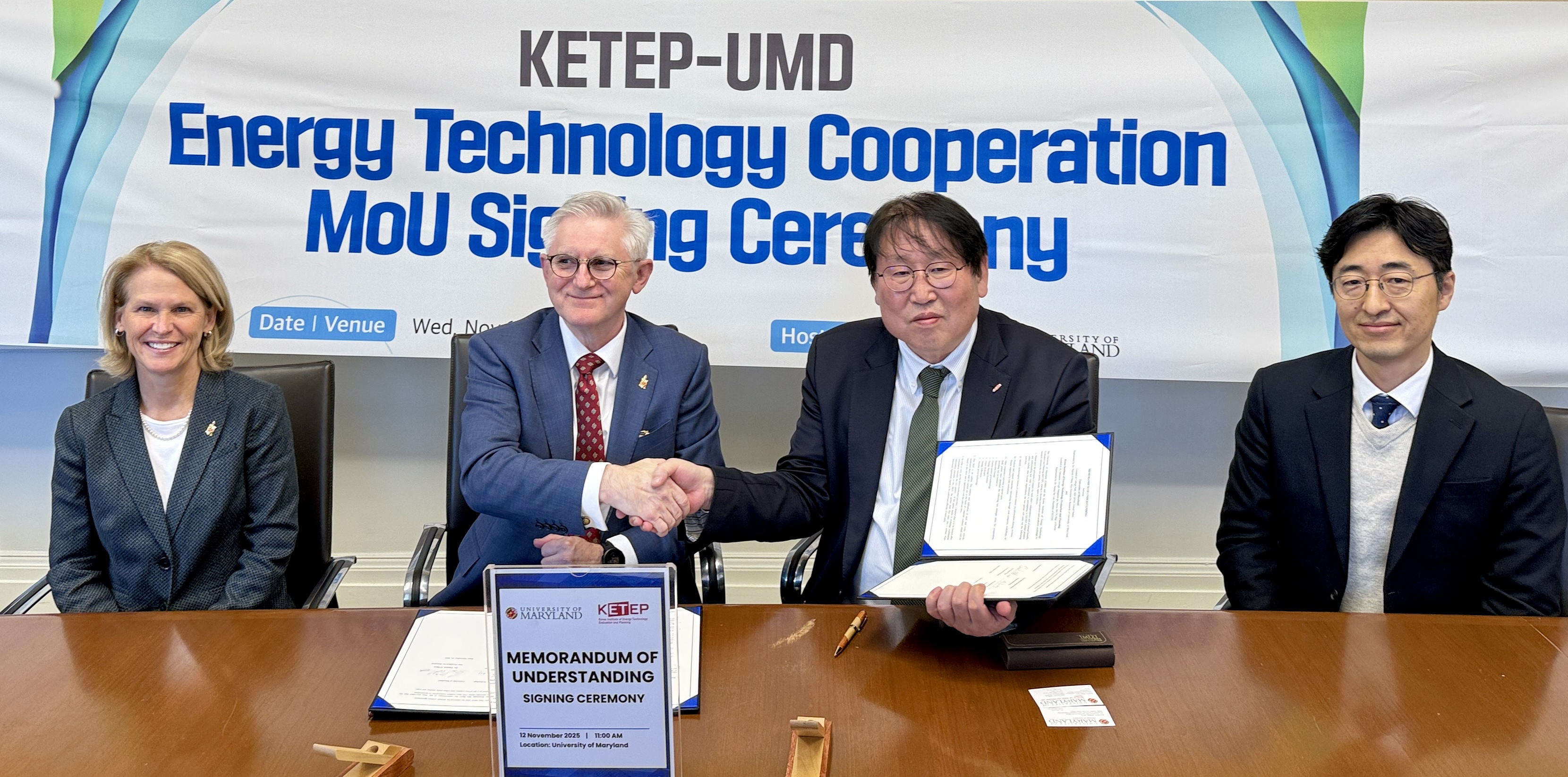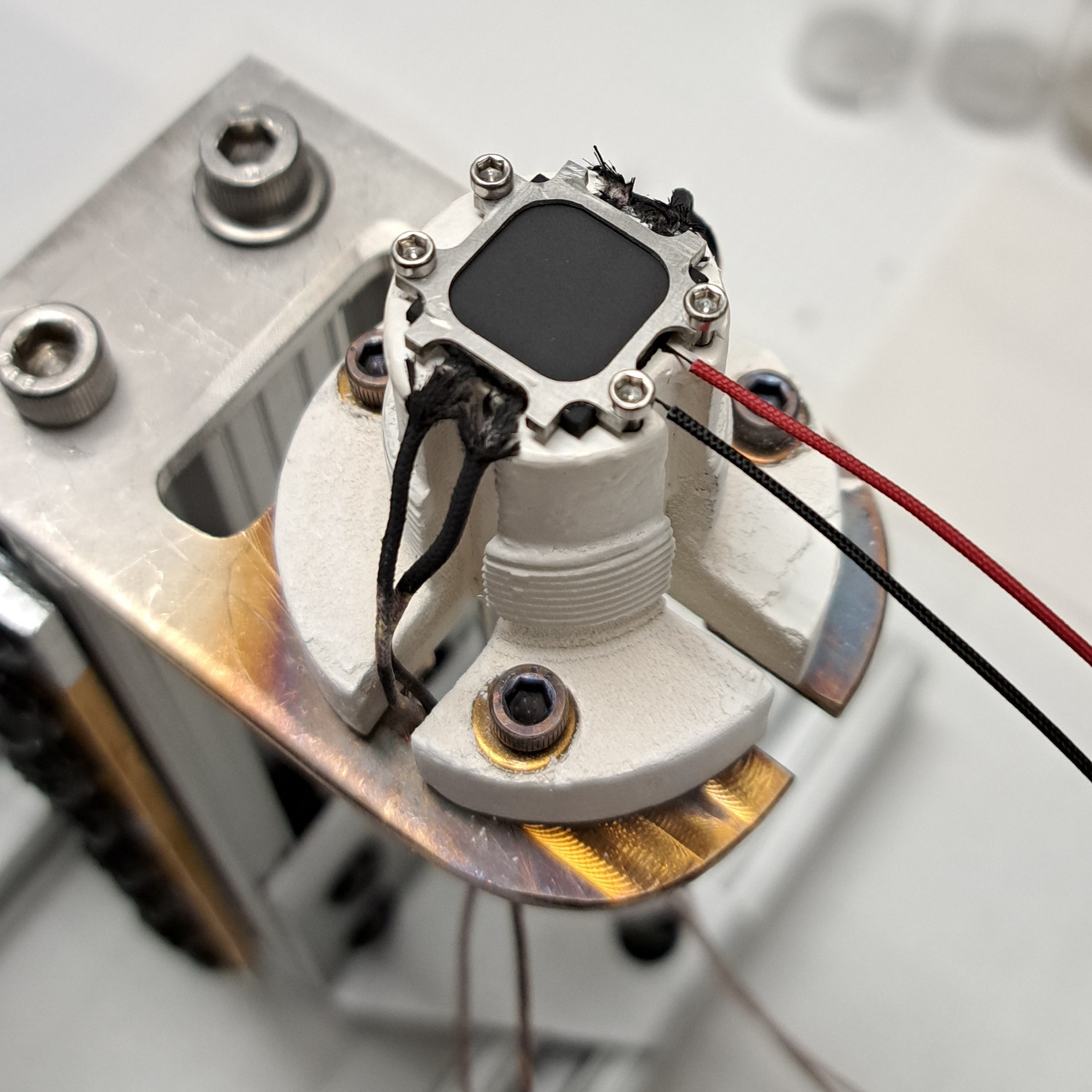News Story
New, superfast method for ceramic manufacturing could open door to AI-driven materials discovery

Ultrafast high-temperature sintering is an innovative approach to fabricating ceramic materials developed by UMD engineers.
Scientists in the University of Maryland (UMD)’s A. James Clark School of Engineering have reinvented a 26,000-year-old manufacturing process into an innovative approach to fabricating ceramic materials that has promising applications for solid-state batteries, fuel cells, 3D printing technologies, and beyond.
Ceramics are widely used in batteries, electronics, and extreme environments—but conventional ceramic sintering (part of the firing process used in the manufacture of ceramic objects) often requires hours of processing time. To overcome this challenge, a Maryland research team has invented an ultrafast high-temperature sintering method that both meets the needs of modern ceramics and fosters the discovery of new material innovations.
The study, led by Liangbing Hu, Herbert Rabin Distinguished Professor of the Department of Materials Science and Engineering and director of the Center for Materials Innovation at UMD, was published on the May 1 cover of Science (DOI: 10.1126/science.aaz7681). Chengwei Wang, an assistant research scientist in Hu’s group, served as first author on the study.
Conventional sintering techniques require a long processing time—it takes hours for a furnace to heat up, then several hours more to ‘bake’ the ceramic material—which is particularly problematic in the development of electrolytes for solid-state batteries. Alternative sintering technologies (such as microwave-assisted sintering, spark plasma sintering, and flash sintering) are limited for a variety of reasons, often because they are material-specific and/or expensive.
The Maryland team’s new method of ultrafast high-temperature sintering offers high heating and high cooling rates, an even temperature distribution, and sintering temperatures of up to 3,000 degrees Celsius. Combined, these processes require less than 10 seconds of total processing time—more than 1,000 times faster than the traditional furnace approach of sintering.
 “With this invention, we ‘sandwiched’ a pressed green pellet of ceramic precursor powders between two strips of carbon that quickly heated the pellet through radiation and conduction, creating a consistent high-temperature environment that forced the ceramic powder to solidify quickly,” Hu said. “The temperature is high enough to sinter basically any ceramic material. This patented process can be extended to other membranes beyond ceramics.”
“With this invention, we ‘sandwiched’ a pressed green pellet of ceramic precursor powders between two strips of carbon that quickly heated the pellet through radiation and conduction, creating a consistent high-temperature environment that forced the ceramic powder to solidify quickly,” Hu said. “The temperature is high enough to sinter basically any ceramic material. This patented process can be extended to other membranes beyond ceramics.”
The study was conducted through close collaboration with Yifei Mo (associate professor, UMD), Bao Yang (professor, UMD), J.C Zhao (professor and department chair, UMD), Howard Wang (visiting research professor, UMD), Jian Luo (professor, UC San Diego), Xiaoyu Zheng (assistant professor, UCLA), and Bruce Dunn (professor and department chair, UCLA).
“Ultrafast high-temperature sintering represents a breakthrough in ultrafast sintering technologies, not only because of its general applicability to a broad range of functional materials, but also due to a great potential of creating non-equilibrium bulk materials via retaining or generating extra defects,” said Luo.
The rapid sintering technology is being commercialized through HighT-Tech LLC, a UMD spinoff company with a focus on a range of high temperature technologies (hight-tech.com).
More about this research:
“This new method solves the key bottleneck problem in computation and AI-guided materials discovery,” said Mo. “We’ve enabled a new paradigm for materials discovery with an unprecedented accelerated pace.”
“We are delighted to see the pyrolysis time reduced from tens of hours to a few seconds, preserving the fine 3D-printed structures after fast sintering,” Zheng said.
The A. James Clark School of Engineering at the University of Maryland serves as the catalyst for high-quality research, innovation, and learning, delivering on a promise that all graduates will leave ready to impact the Grand Challenges (energy, environment, security, and human health) of the 21st century. The Clark School is dedicated to leading and transforming the engineering discipline and profession, to accelerating entrepreneurship, and to transforming research and learning activities into new innovations that benefit millions. Visit us online at eng.umd.edu and follow us on Twitter @ClarkSchool.
Published April 30, 2020









